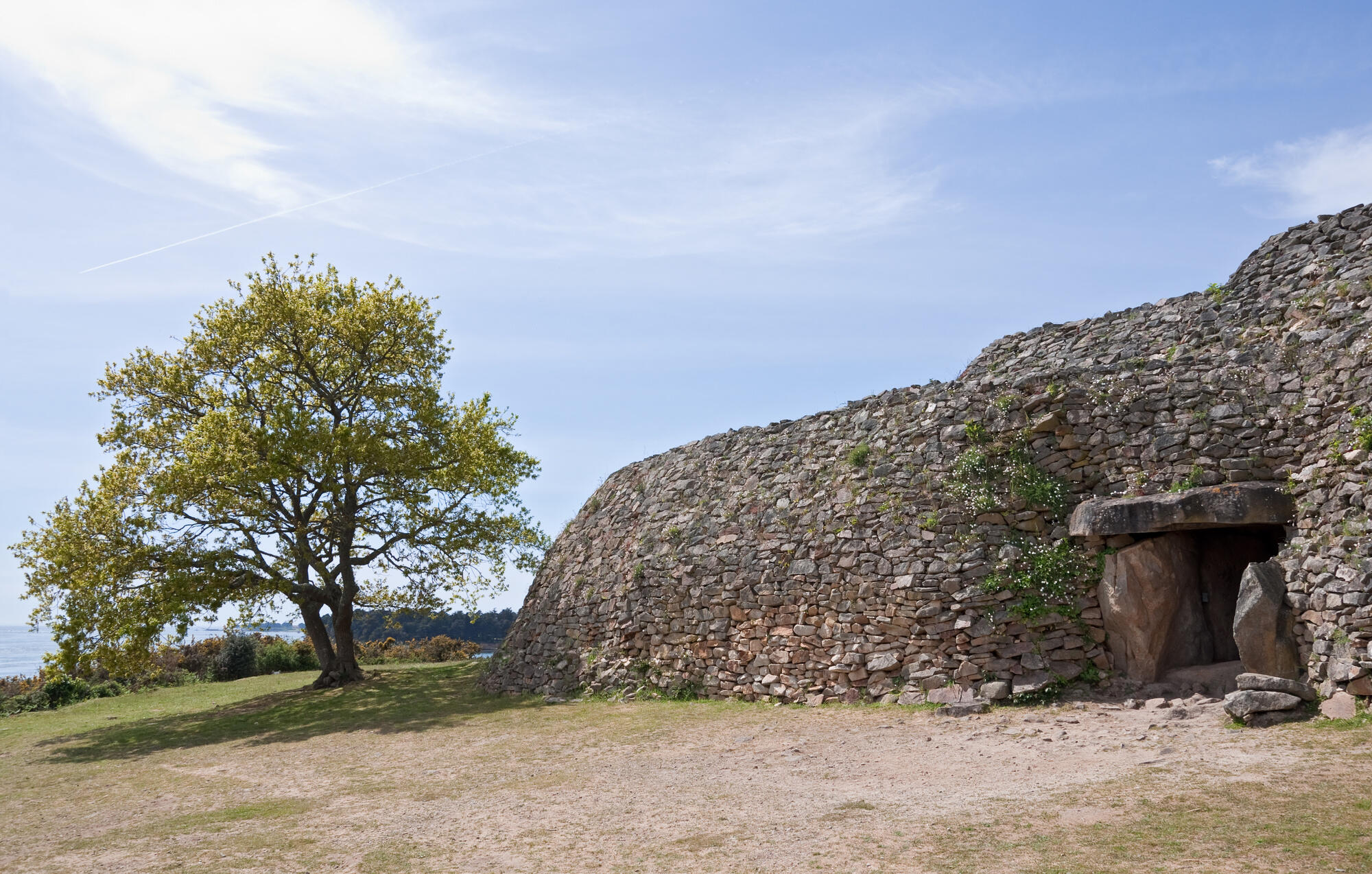- Home
- Discover the megaliths of Morbihan
- Monumentalism
- Did you know ?
- Bodyless graves
While body tissues decompose quickly, the absence of skeletal remains is often considered unusual. Some have used this observation to deny the funeral function of megalithic tombs.
Bone is a very complex material made up of organic constituents (fat and proteins) and mineral salts (mainly calcium carbonates and calcium phosphates). When bones are attacked by acids, they turn into water soluble products. The soil naturally contains humic acids and the rainwater is slightly acidic (due to atmospheric carbon dioxide). Bone dissolution therefore occurs naturally (albeit more or less quickly), and is helped by the acidic substances produced by the decomposition of the body itself. Bones can be preserved only in certain conditions:
- Certain soils contain limestone which is soluble in acidulated water. The limestone neutralises the acidity of the soil and thus protects the bones. On the coast of Brittany, limestone comes from shell fragments, which are very common in coastal sand.
- Bodies may in some cases be protected against streaming and/or capillary action: they are not in contact with water, so are not attacked by acids and resist dissolution. This is common in certain particularly well built graves and where the bones are protected by a structure which can act as an "umbrella".
